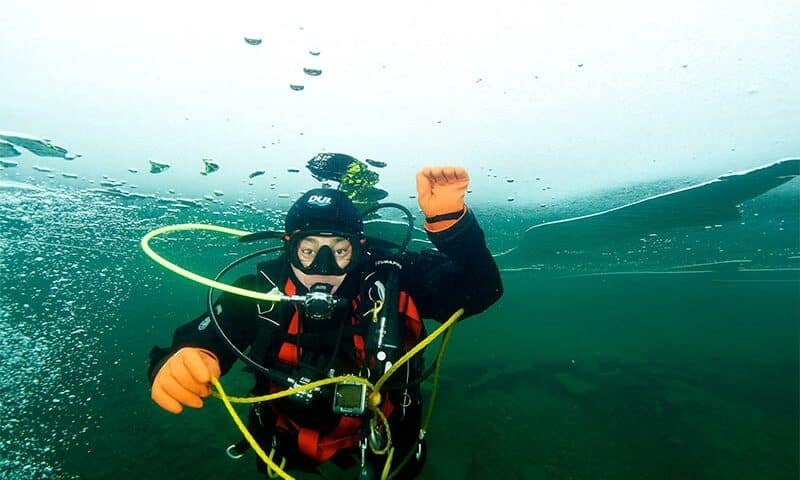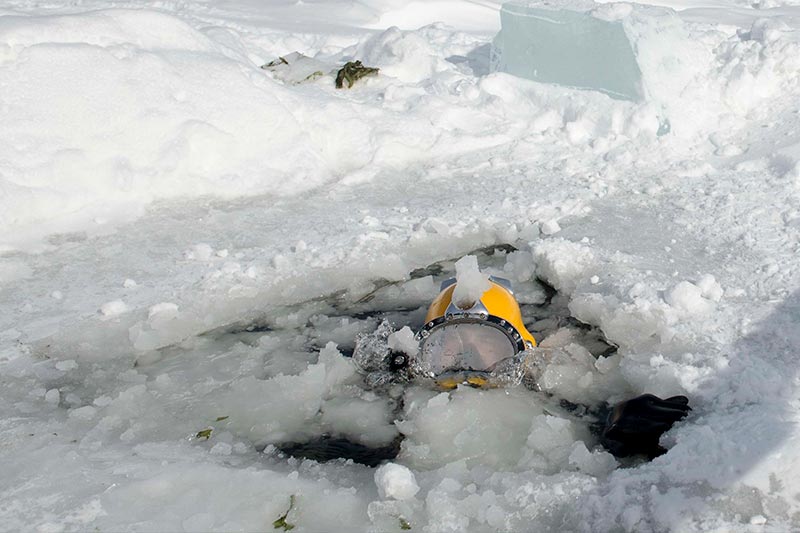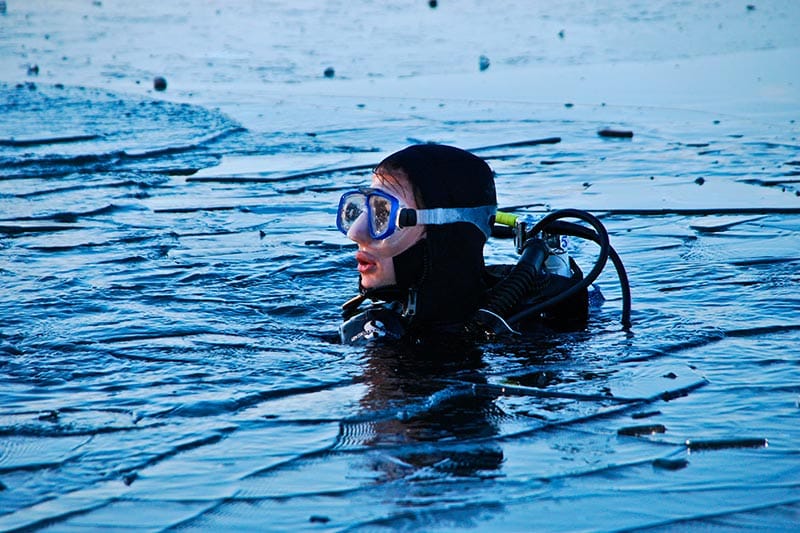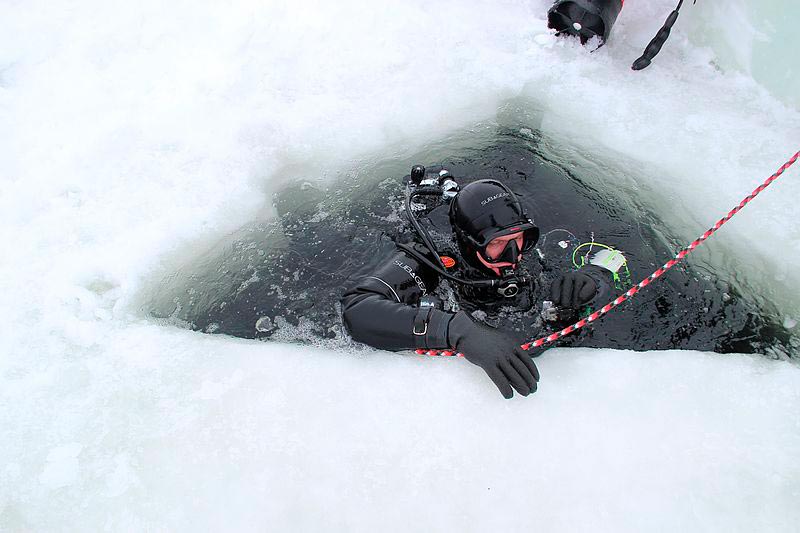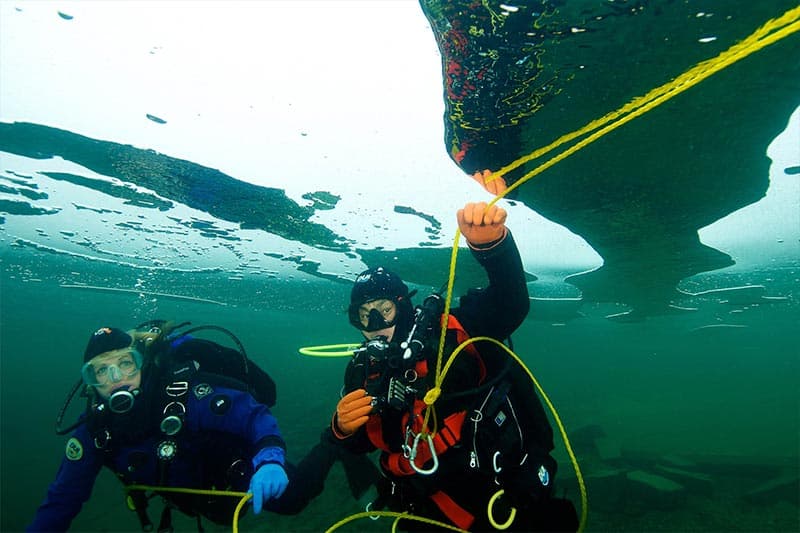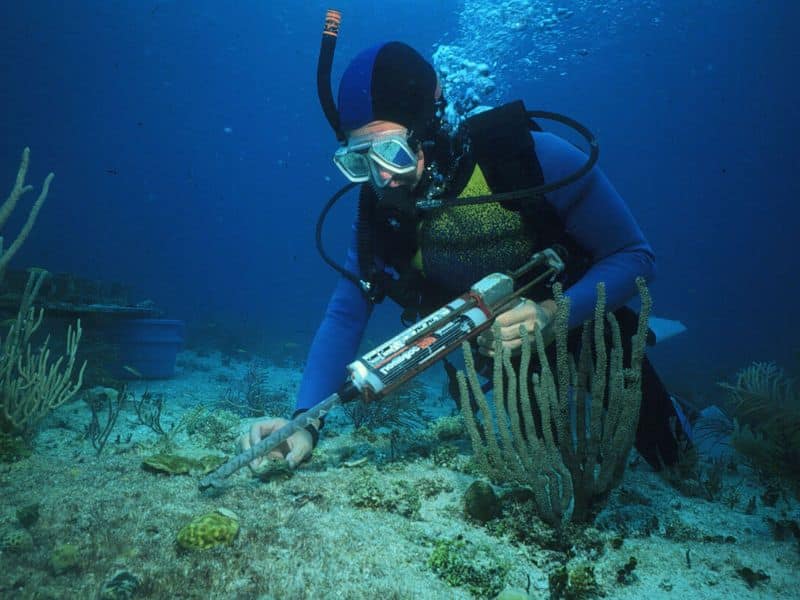3. What A Diver Needs for Ice Diving: Equipment
Ice diving requires specialized equipment to ensure the safety and comfort of divers. In addition to clothing designed to protect against extreme cold, specific tools for cutting holes in the ice, removing accumulated snow, backup equipment, buoyancy devices, and other accessories are essential.
Clothing for Ice Diving: Drysuits with appropriate thermal layers are the norm for ice diving, protecting against low water temperatures, ranging from 4°C to 0°C in freshwater and approximately -1.9°C for seawater. Items like hoods, gloves, boots, and full-face masks are essential to protect the diver’s skin and prevent limb freezing.
The choice between a drysuit and a thick wetsuit may depend on individual cold resistance, with some preferring the former due to the evaporation of water from the wet suit after immersion. Preheating a wetsuit with hot water and using heated shelters are additional strategies to combat the cold.
Ice Diving Equipment: Cold-water diving regulators are essential, and environmentally sealed models prevent the risk of freezing. It is recommended to use at least two regulators rated for ice diving, strategically arranged to ensure a constant air supply in case of problems with one of them.
Divers must be proficient in side-mount configuration and airflow switching, including the ability to switch to an octopus regulator. Keeping regulators warm and dry before immersion reduces the risk of freezing. Pre-dive equipment checks are crucial to ensure its effectiveness at low temperatures.
Buoyancy and Weights: Using a drysuit requires a buoyancy compensator and a slightly negative configuration is preferred for ice diving. Independently operating tethered divers should have a full-face mask, and redundant air supply to ensure safety in emergencies.
Ropes and Guides: Disorientation is common under the ice, so having a guide back to the entry point is essential. The choice between a surface-controlled line or a reel line deployed by the diver and fixed to the ice ceiling depends on various factors, such as current and visibility.
Surface Equipment: Surface equipment must have adequate thermal protection, including waterproof footwear, anorak, hat, UV-filter sunglasses, lip balm, and hand and face cream.
Devices such as crampons can be useful to provide traction on the ice when cutting holes or transporting equipment.
Necessary tools for cutting ice, a tent or tarp to cover the opening, and poles to push away ice from the hole and keep it open should not be forgotten.




